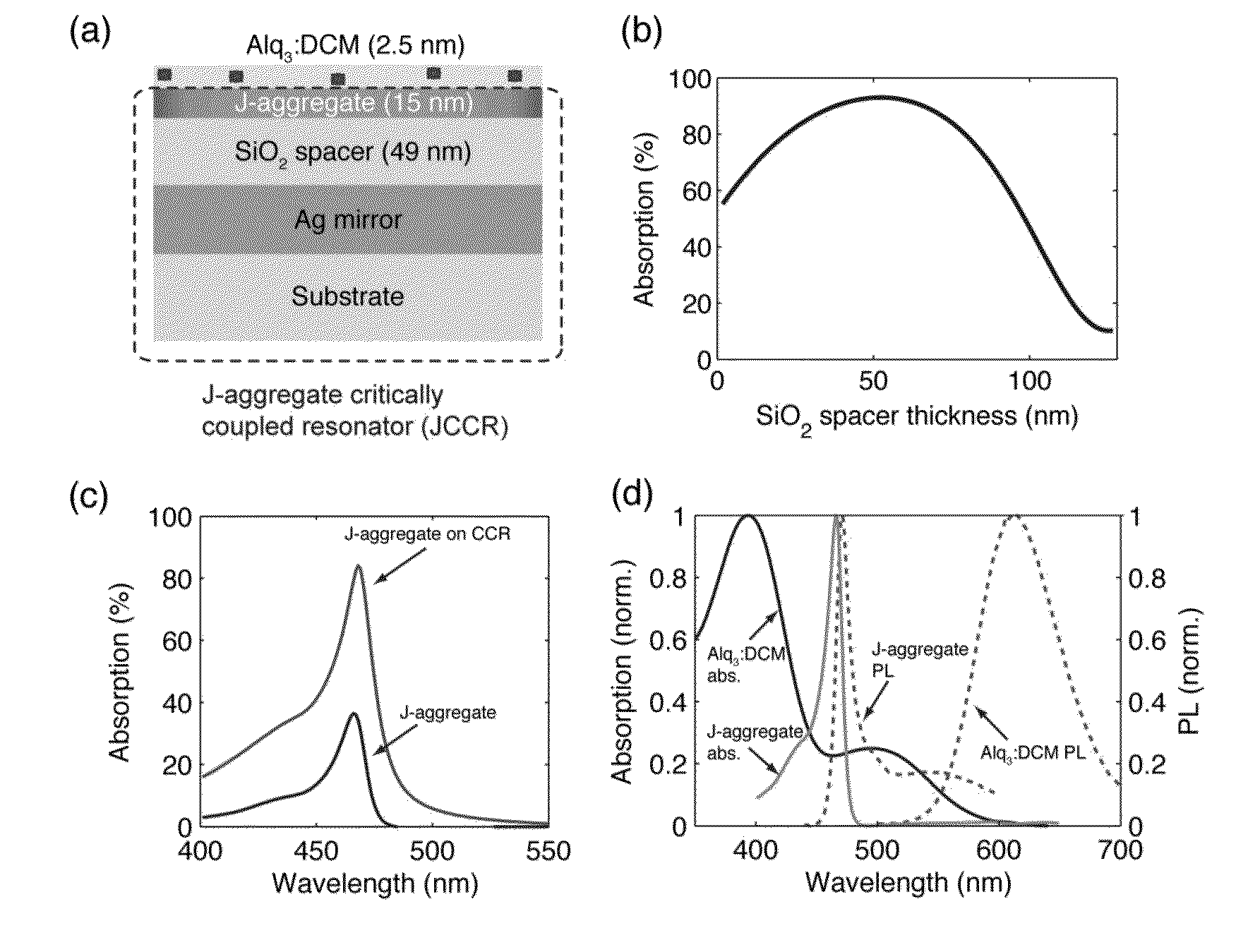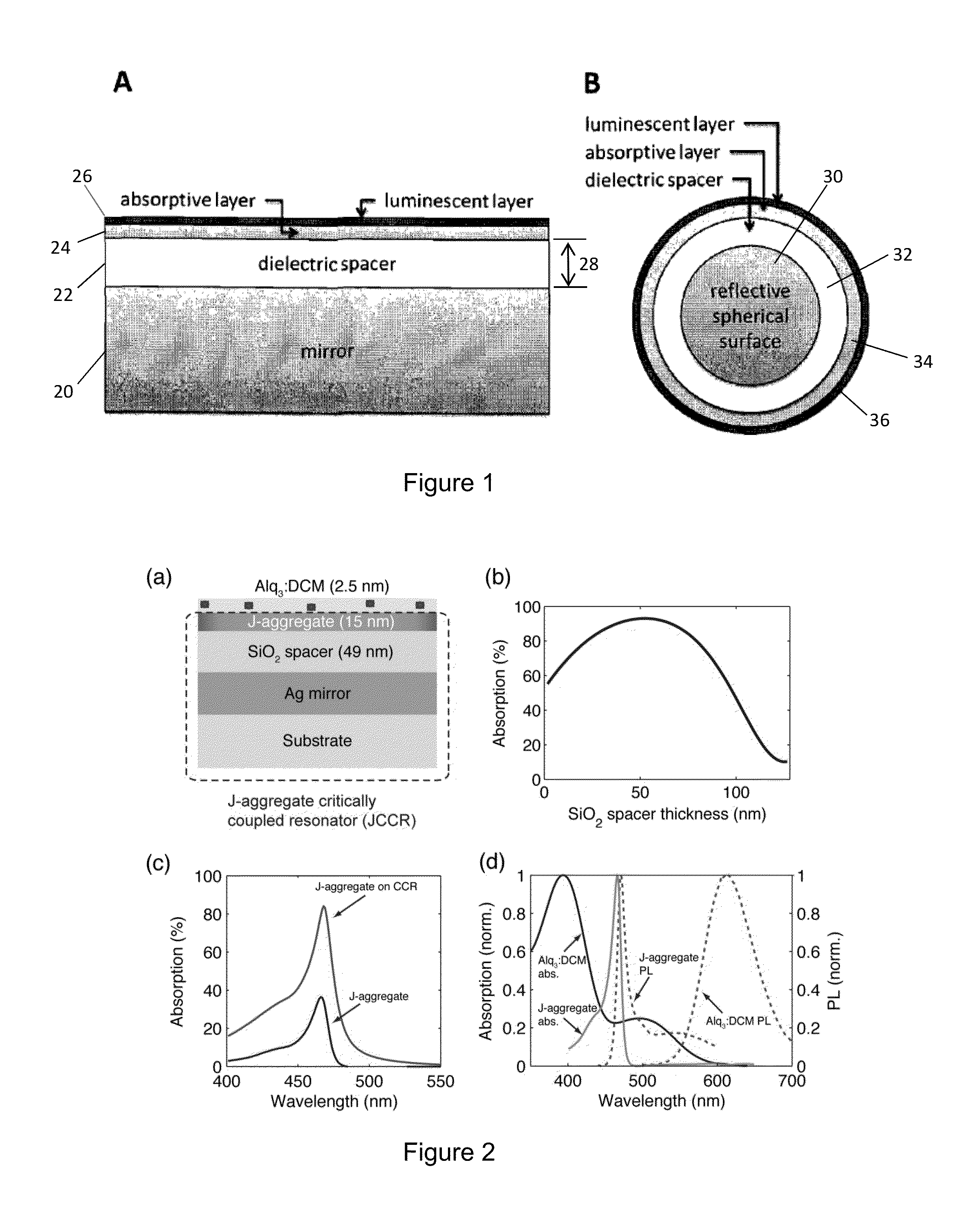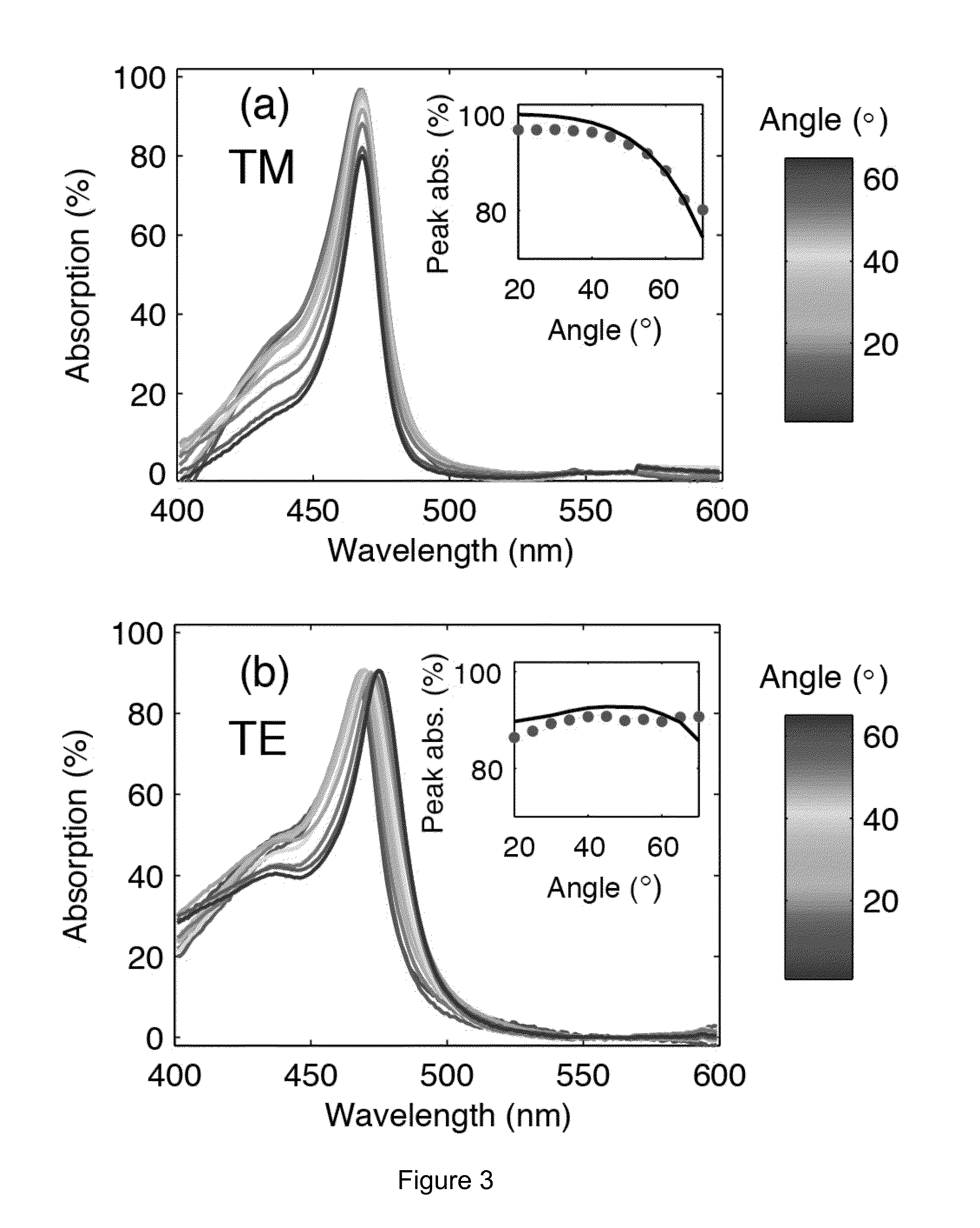Device and method for luminescence enhancement by resonant energy transfer from an absorptive thin film
a technology of absorption and energy transfer, applied in the field of fluorescence enhancement of such devices, to achieve the effect of enhancing the brightness of luminescent molecules, nanostructures, thin films, and enhancing the brightness of isolated luminescent molecules
- Summary
- Abstract
- Description
- Claims
- Application Information
AI Technical Summary
Benefits of technology
Problems solved by technology
Method used
Image
Examples
Embodiment Construction
[0023]The methods for luminescence enhancement presented herein generally rely upon light absorption within a thin film and subsequent energy transfer to a luminescent layer situated next to this absorptive film. For example, a purely excitonic and large-area approach to the enhancement of lumophore emission may be achieved by coupling the lumophore to a highly absorbing resonant optical structure.
[0024]In one embodiment, the absorptive layer may be a thin film of organic or inorganic material having a thickness substantially less than the exciton diffusion length. Typical exciton diffusion lengths are from about 10 to about 100 nanometers (nm). The absorptive film may have an emission spectrum that overlaps with the absorption spectrum of the lumophore. To enhance light absorption within the absorptive layer, a geometry referred to as a critically coupled resonator is used, such as that described in J. R. Tischler, M. S. Bradley, V. Bulovic, Opt. Lett. 31, 2045 (2006), incorporated...
PUM
 Login to View More
Login to View More Abstract
Description
Claims
Application Information
 Login to View More
Login to View More - R&D
- Intellectual Property
- Life Sciences
- Materials
- Tech Scout
- Unparalleled Data Quality
- Higher Quality Content
- 60% Fewer Hallucinations
Browse by: Latest US Patents, China's latest patents, Technical Efficacy Thesaurus, Application Domain, Technology Topic, Popular Technical Reports.
© 2025 PatSnap. All rights reserved.Legal|Privacy policy|Modern Slavery Act Transparency Statement|Sitemap|About US| Contact US: help@patsnap.com



